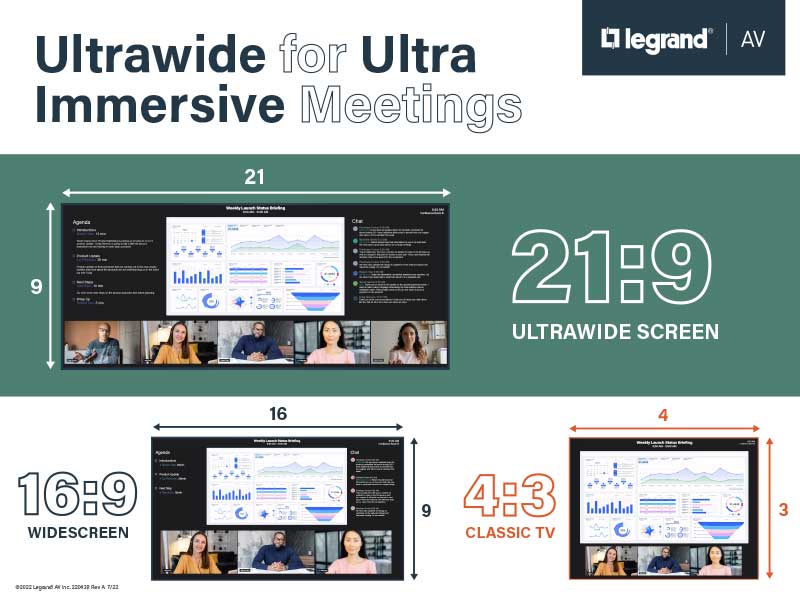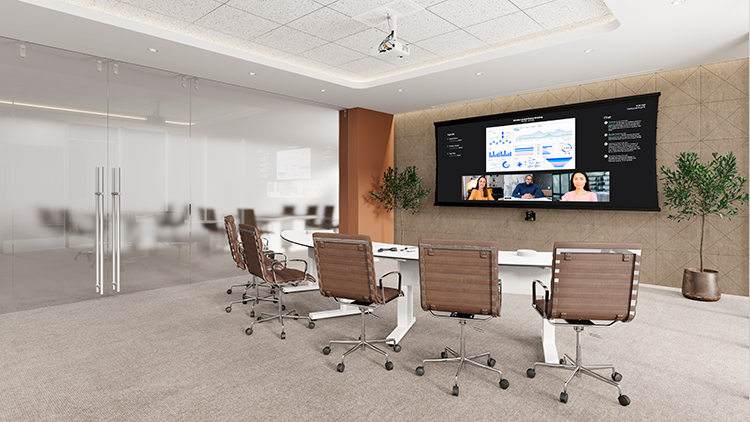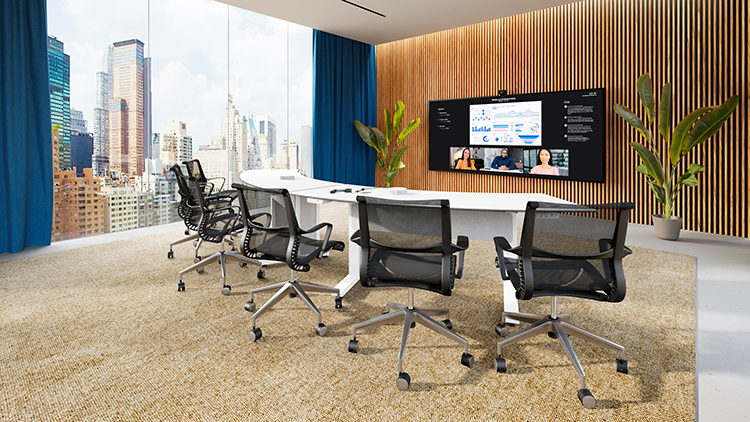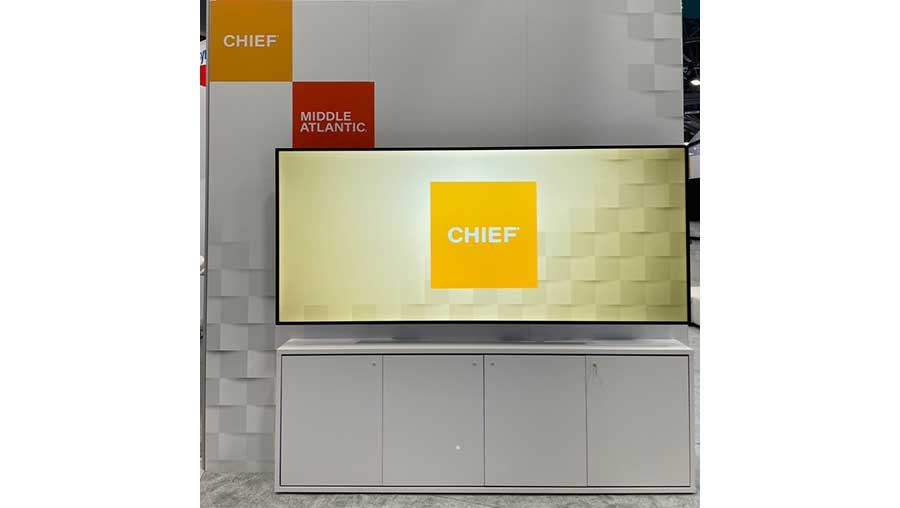Posted on 7/18/2022 by Legrand AV Team
If you went to InfoComm this year, you might have noticed a proliferation of the ultrawide 21:9 aspect ratio on display. It was hard to miss them for their striking width – similar to the Wide Screen Cinemascope format.

In fact, it’s an interesting comparison to make. (Stay with me.) Back when televisions hit the market, movie theaters had to up their game and move away from the 4:3 shape to create a more immersive experience with wider horizontal fields of view that appealed to our physiological systems for sight. This enhancement was enough to keep people leaving their homes to go to the cinema.
Likewise, as companies struggle with overcoming reluctance about return to the office plans, they might want to look at what 21:9 displays and screens bring to the video conferencing space. It could potentially serve as a new reason to be at the office in person.

A lot of this shift is being driven by conferencing software companies like Microsoft and their Teams Room front row layout. As they look to the future of Teams meetings, they are zeroing in on the wider format that provides space for a row of participants across the bottom, a center space for the presentation or common workspace, and two side areas for chat, ancillary data, or anything else that might enhance the meeting experience. For it to work well, a wider format is vital to keep the center space from being split down the middle with a bezel. Getting away from the stacked heads also helps to provide a more natural experience with people next to each other on the screen at eye level just as they would be around a conference table.
If this sounds familiar, it should. Brian Retzlaff, Engineering Solutions Manager, compared this setup to the high-end custom-built rooms from a decade ago that were based around a hard video codec.
“It’s a new take,” he said. “But using a big, wide display instead of multiple displays.”
The effects of this shift to a wider format can reach beyond just the display to the orientation of the meeting space altogether. Currently, spaces are optimized for those in the room with seating around a central table and a display at one end (usually the smaller end) for presentations. With an ultrawide display, the presentation space moves to the longer wall, and the table seats people in the room on the same side facing that wall. In this way, remote and in person attendees can have a more equitable experience.
Before I go on, a bit of a side note. *Takes off glasses to look at camera.* We’re all still in the middle of adapting this format, and marketers chose early on to call it 21:9 when in reality it’s 64:27. The difference for flat panel manufacturers is negligible, but if you are using projection you want to be sure you are specifying apples to apples, so to speak. *Puts glasses back on.* End of side note.

The new Teams format supports the 64:27 ratio. The question for AV integrators is how to best support this environment. Good question, me!
At the moment, there are no projectors on the market dedicated to 21:9 ratio. A workaround until that happens is to line up the projector to fit the width of the screen with the Teams content, though there will be projection above and/or below the screen that would be visible with the lights off. Blending two projectors would be problematic when trying to split a single Teams signal into two streams that are overlapping.
“For now, the common setup will be overshooting the screen,” said Brain Schwartz, product manager at Da-Lite.
Tensioned Advantage® with SightLine™ is now available in 21:9 ultrawide tormat standard line part numbers – no customization or drawing sign-off necessary. Other electric and fixed frame options in standard part numbers for this format include Tensioned Contour, Cinema Contour and UTB Contour. If that isn’t enough, the Screen Designer tool can customize any Da-Lite product to meet specific requirements.
Another benefit of the 21:9 ratio for video conferencing is the ability to put the camera above the display. Vaddio’s IntelliSHOT-M auto-tracking camera is Certified for Microsoft Teams. The IntelliFrame technology makes it ideal for tracking presenters in boardrooms or framing a group of coworkers in larger conferencing spaces. Integrators can adjust the camera based on the room’s conditions and end user preferences. Since IntelliSHOT-M is PoE+ powered, placement is much easier to manage.
Not one to be left out, Chief has already arrived on the scene with ultrawide display mounts that can add an ultrawide display to a wall, ceiling, floor stand or cart. Until 21:9 projectors arrive, extra-large flat panel displays could be an alternate choice for adding immersive capability to video conferencing spaces. A Jupiter 21:9 display was in the Legrand | AV InfoComm booth.

“It was one of the most popular parts of our booth,” said Retzlaff. “The Chief mount with the pull-out accessory really adds a lot to this bulky display by being able to move it away from the wall for servicing.”
For people in the room, arc tables from Middle Atlantic help to create an atmosphere of equity with everyone on the same side of the table and clearly visible to the camera.
A lot of the discussion right now is focused on new construction. Re-orienting a room to a different wall presents unique and sometimes expensive challenges if it requires electrical rewiring. It’s still early days for this format and the potential impact on conferencing. We might see adoption in home theaters or command and control centers. It’s worth keeping an eye on developments and how they can help enhance end-user experiences.
In the meantime, check out our page dedicated to exploring the development of this trend as well as some handy diagrams to start specifying.

 All News
All News